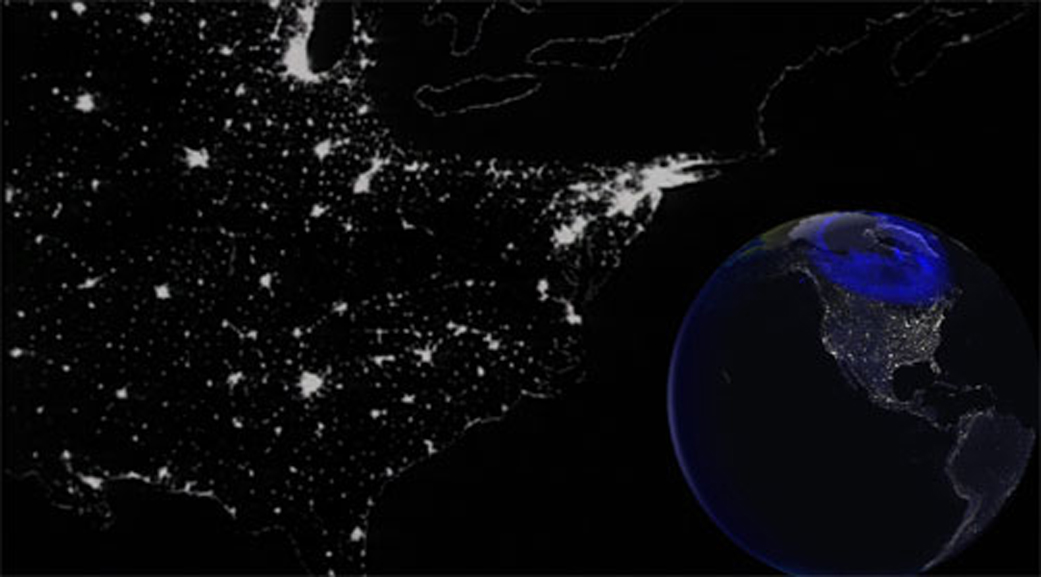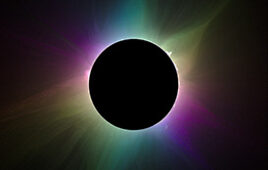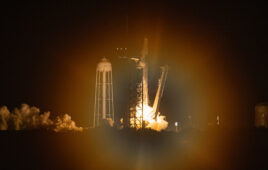
Credit: NASA
The solar storm of late May 1967 brought the U.S. and the Soviet Union to the brink of global thermonuclear war, since the sun’s interference had jammed radar and some vital Cold War communications technologies. An even bigger solar storm, the so-called Carrington Event, set telegraph wires on fire in September 1859, and caused enough panic among some to believe it was the end of the world.
The energy-intensive 21st century world has not dealt with these kinds of challenges from our sun – yet.
But eventually, there will be a solar event that could compromise large swaths of the power grid, experts told Laboratory Equipment, a sister publication of R&D. Blackouts of that kind could cause chaos at large in an increasingly wired world, they explained.
Next month Los Alamos National Laboratory launches a new investigation of how those solar events could affect a grid like a long string of Christmas lights – increasingly long and susceptible to a cascade of problems.
The three-year Los Alamos program will be funded internally for about $5 million – and will determine what transformers, circuits, stations and conduits could be fried by a flare-up from the sun, said Mike Henderson, leader of the national security-focused program.
“Impacts of Extreme Space Weather Events on Power Grid Infrastructure: Physics-Based Modeling of Geomagnetically-Induced Currents During Carrington-Class Geomagnetic Storms,” will first lay a foundation to understand the stress the sun can exert on terra firma.
But the look will also extend to computer models of what exactly will happen with a wide variety of solar flares, bombardments of radiation, and ionospheric effects – and what circuits would be fried.
The predictive exercise will also explore what a recovery in the aftermath would look like.
“Right now we really don’t know what the effects would be,” said Henderson, in an interview. “So far, it’s been very difficult to predict what an event like that would look like.”
The Los Alamos team will base its investigation on the documented effects of storms like the 1859 and 1967 storms, along with events like the September 1989 shockwave that completely blacked out Quebec for 12 full hours.
But such powerful storms, if directed in a slightly different way, could knock out much more – and for longer. A complete loss of power could produce a civil breakdown along the lines of a Hurricane Katrina disaster, Henderson said. Emergency response, traffic lights, hospitals and almost every public service relies on electrical connections – so a breakdown could prove a “logistical nightmare.”
“Without power, things really fall apart,” said Henderson.
One of the weak spots in the grid acknowledged so far is the step-up and step-down transformers, which form crucial junctures within the interconnected grid, said Henderson. Since most of those transformers are not standardized, if they are knocked out by a surge for whatever reason, it could be a long, chaotic time to repair, or rebuild. Just getting hardware from one side of the country to the other could be a serious conundrum.
Worst case scenarios posit that a region could be rendered powerless for months at a time, he said.
Power grid vulnerabilities have been addressed at a national policy level for about a decade. A National Academy of Sciences report found that the entire national power grid was uniquely susceptible to terrorist attacks – in addition to a long list of natural disasters, including solar storms.
The Los Alamos team has been at the vanguard of understanding space weather’s effects on the energy infrastructure worldwide. Geoffrey Reeves, a Los Alamos space physicist, said in another interview that space weather has not yet tested the vital pressure points of a computerized and electric-intensive grid.
“There are many types of space weather. We haven’t really seen a storm that affects the New York area in a major way,” said Reeves.
“There’s been a lot of progress, but as much as we’d like,” added Reeves. “We’re a long way from looking at the sun and predicting exactly what the effects will be here back on Earth.”
Henderson said the goal is to have a better game plan ready on standby as soon as possible. No less than the White House Situation Room has taken a keen interest in getting more information from the space physicists before the next big one.
“Nobody knows exactly what’s going to happen,” said Henderson. “Everyone’s taking this a little more seriously at this point.
“Impacts of Space Weather Events on Power Grid Infrastructure” begins in September, and is expected to run through most of 2019.




